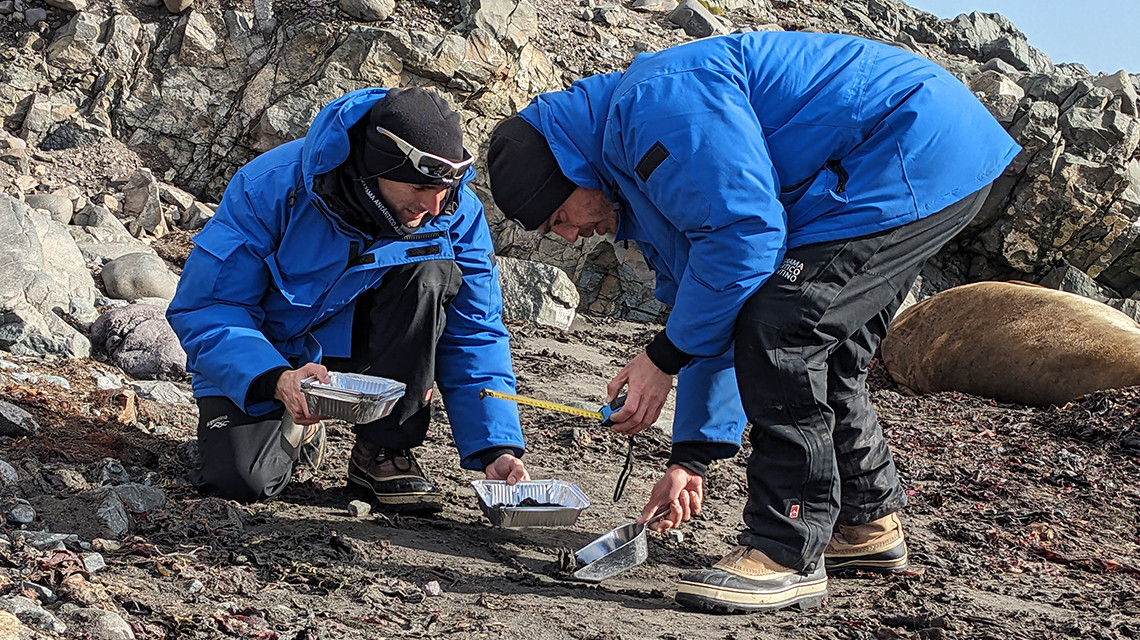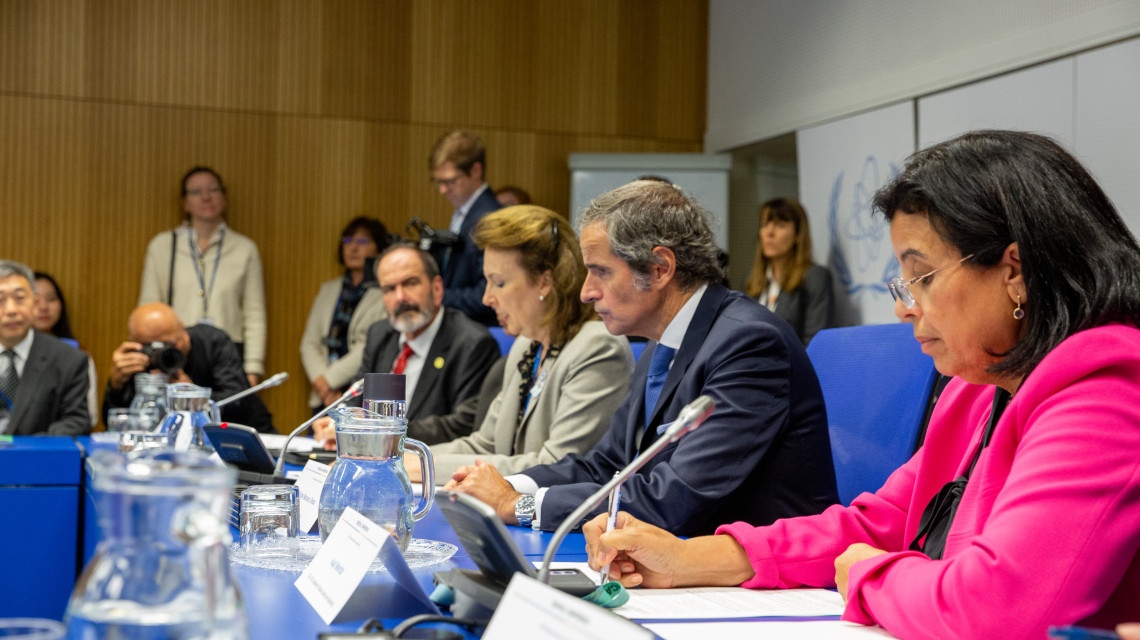A pioneering IAEA mission to Antarctica has found evidence of microplastic pollution in lakes, shorelines and the ocean. These preliminary findings show how plastic pollution has reached every corner of the earth, and how microplastics are threatening the health of the global ocean.
The IAEA's first scientific research mission to Antarctica through the IAEA's NUTEC Plastic initiative was launched by IAEA Director General Rafael Mariano Grossi and the President of Argentina Javier Milei in January. With the support of national authorities, IAEA experts joined Argentine scientists onboard the icebreaker Irizar on her trip between the three Argentine Antarctic Bases: Marambio, Esperanza and Carlini. The team, composed of IAEA and Argentine scientists, used Irizar's fully functional onboard laboratories to prepare samples for analysis at the IAEA's Marine Environment Laboratories in Monaco while sharing their knowledge of nuclear technologies and protocols that can be applied in the Antarctic environment.
Pleased to be joined by @ArgentinaMFA's @DianaMondino at #IAEAGC to present progress on @IAEAorg's #NUTECplastics. Our recent mission to Antarctica with 🇦🇷 yielded groundbreaking data on microplastics, which will strengthen efforts against marine pollution. pic.twitter.com/SDoR9wAlqF
— Rafael MarianoGrossi (@rafaelmgrossi) September 16, 2024
The NUclear TEChnology for Controlling Plastic Pollution (NUTEC Plastics) initiative uses nuclear-derived tools and technology to fight global plastic pollution on two fronts: at point of source, by introducing new technologies to improve plastic upcycling; and to monitor plastic pollution in the ocean, where the bulk of plastic waste ends up. IAEA NUTEC experts work for and with countries to address this growing threat and ensure that they have the knowledge and capacity they need to assess, monitor and mitigate plastic pollution.
Sharing preliminary findings at a side event of the 68th IAEA General Conference last week, NUTEC Plastics experts informed the delegates about the process of developing protocols and analysing these microplastic particles.
"While microplastics have been studied for a few years now, we are now addressing the presence of microplastics even smaller than what previous research has been able to analyse. As the techniques and protocols have never been harmonized for microplastics of this size, it can take significant time to test or develop these methods and ultimately apply them", said IAEA Research Scientist Marc Metian. "Preparation and analysis can take up to twenty days for just one sample."

IAEA Research Scientists Francois Oberhaensli and Marc Metian take samples of Antarctic beach sand for later analysis. (Photo: IAEA)
Preliminary results show that every sample analysed to date, contained microplastics, namely Teflon, polyvinyl chloride (PVC), polypropylene (PP) and polyethylene terephthalate (PET). Once the analysis of all samples collected will have been completed, the results will be published and shared with the Scientific Committee for Antarctic Research, an interdisciplinary body of the International Science Council which provides scientific advisory to the Antarctic Treaty.
Speaking at the side event, Argentine Foreign Minister Diana Mondino said: "Our country's commitment to the Antarctic environment, as well as to international and scientific cooperation, is clearly demonstrated. We believe that the NUTEC Portal will be a valuable and effective tool to support the IAEA's efforts to address shared challenges through the peaceful applications of nuclear energy".

(From right) Deputy Director General Najat Mokhtar, IAEA Director General Rafael Mariano Grossi, Argentine Minister of Foreign Affairs H Diana Mondina and Director Luis Longoria Gandara attend the side event "NUTEC Plastics Outlook and the Antarctic Mission" at the 68th General Conference of the IAEA in Vienna, Austria, 16 September 2024. (Photo: A.Barber Huescar/IAEA)
Representatives of Australia, Malaysia, Peru and the United States of America also made speeches. IAEA experts shared progress made in both aspects of NUTEC, including an updated roadmap for upscaling regional and national capacity to use irradiation technology for recycling and a revamped NUTEC portal for Member States to access up-to-date information.
The Antarctic mission is part of the IAEA's ongoing action to build capacity in laboratories worldwide to generate information on plastic pollution levels and sources of plastic pollution through marine microplastic monitoring, and is a key step in advancing an overarching goal of developing a global marine monitoring network.






